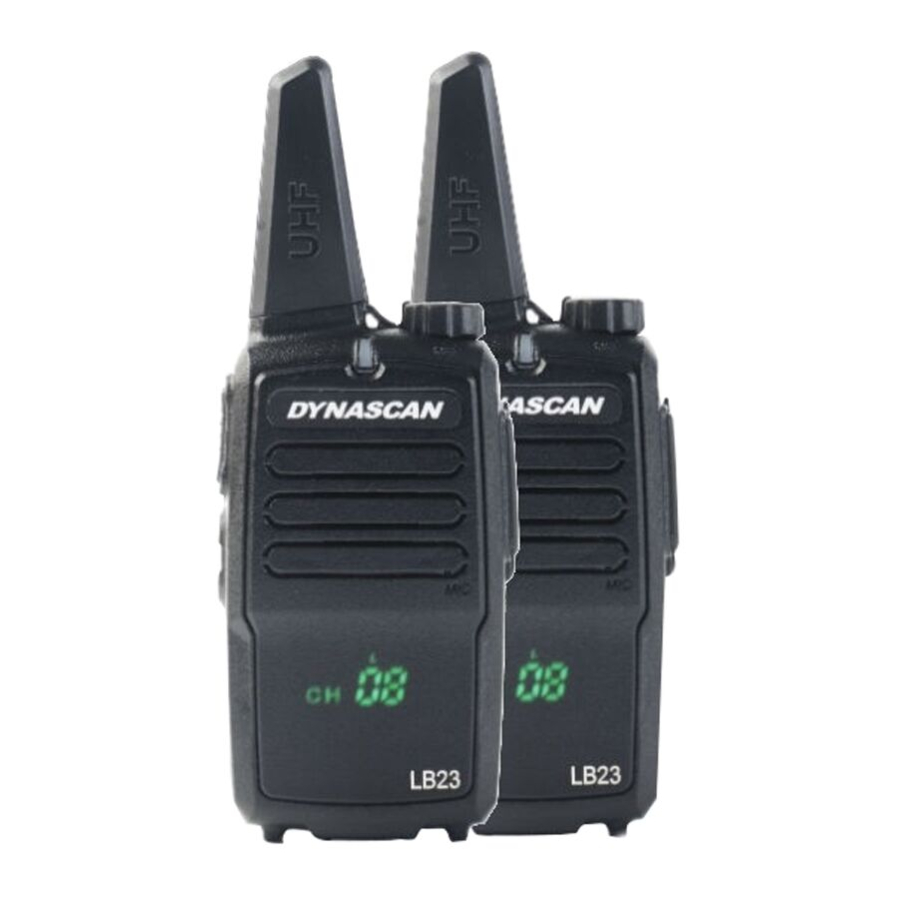Dynascan PMR446 Manual de instruções - Página 8
Procurar online ou descarregar pdf Manual de instruções para Transcetor Dynascan PMR446. Dynascan PMR446 10 páginas. Handheld transceiver
Também para Dynascan PMR446: Manual de instruções (11 páginas), Manual de instruções (16 páginas)

7.- AUXILIARY FUNCTIONS:
7.1.- TIME-OUT TIMER:
This function prevents any single user from transmitting on a channel for an
extended period of time.
If you continuously transmit for 10 minutes, you will hear a warning tone and the
transceiver will stop the transmission. To disable the tone, release the [PTT]. You
can press [PTT] again to resume transmission.
7.2.- BATTERY SAVE:
The battery save function decreases the amount of power used when a signal is not
being received or no operation is performed on the transceiver. If no signal is
received on the channel and no operation is performed on the transceiver within 10
seconds, the battery save function will be enabling. The function will be
automatically disabled when a signal is received or an operation is performed into
transceiver.
7.3.- LOW BATTERY WARNING:
The low battery warning alerts you when the battery needs to be recharged.
If when transmitting, the battery power goes below a predetermined value, the
status LED will blink red. When a tone is sounds, the transceiver stops transmitting.
In this case, recharge the battery pack or replace it with a fully charged one.
7.4.- MONITOR (SQUELCH):
When no signal is received, the "squelch" automatically mutes the speaker so you
will not hear background noise. To manually disable the "squelch", press and hold
the [MONITOR] key. This is useful when you want to adjust the volume level or
when you need to hear a weak signal.
Note:
- The LED indicator lights green while the "squelch" key is pressed.
7.5.- ANALOGICAL CODES (QT) AND DIGITAL CODES (DQT):
In some channels you can program QT/DQT tones. A QT/QDQT tone is a
subaudible tone that allows you to ignore (not hear) the calls of other users who are
using same channel. When you receive a signal that has a different tone than the
one programmed on your transceiver, you will not hear the communication. In the
same way, only users who have programmed the same tone as their transceiver
can hear to their communication.
English - 8 -
